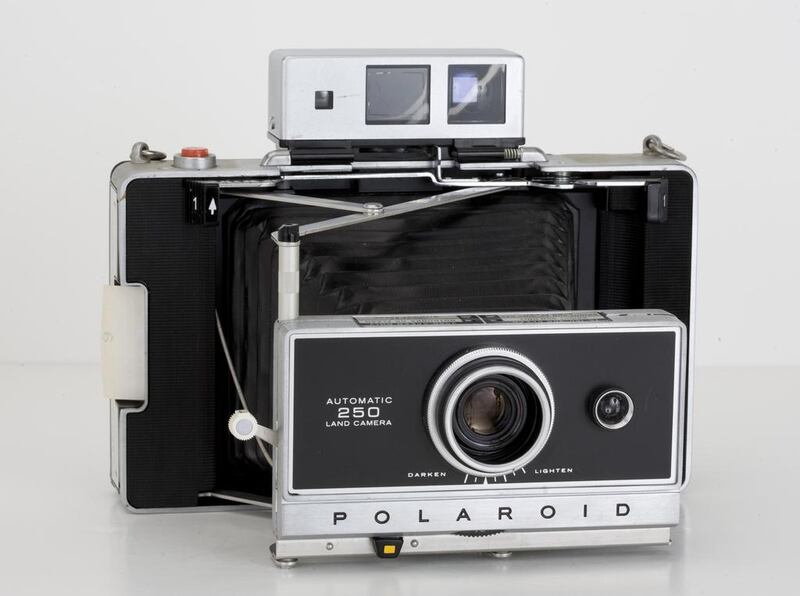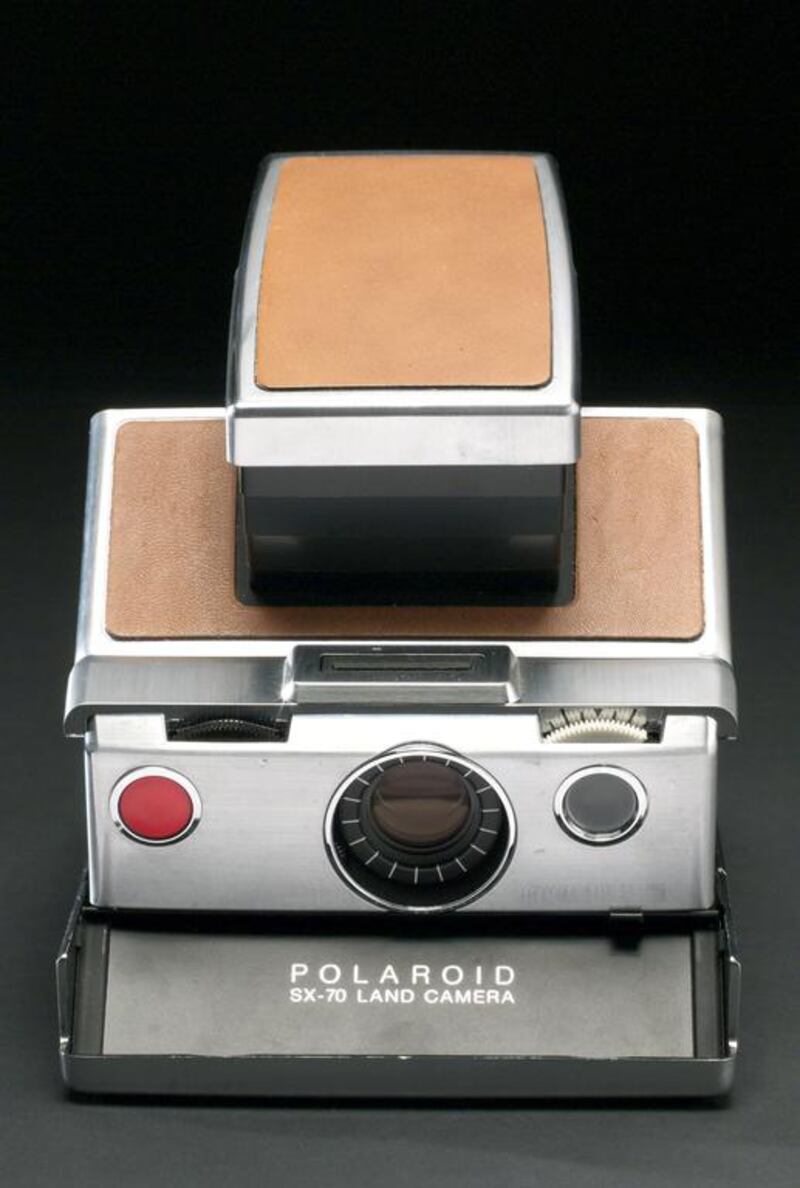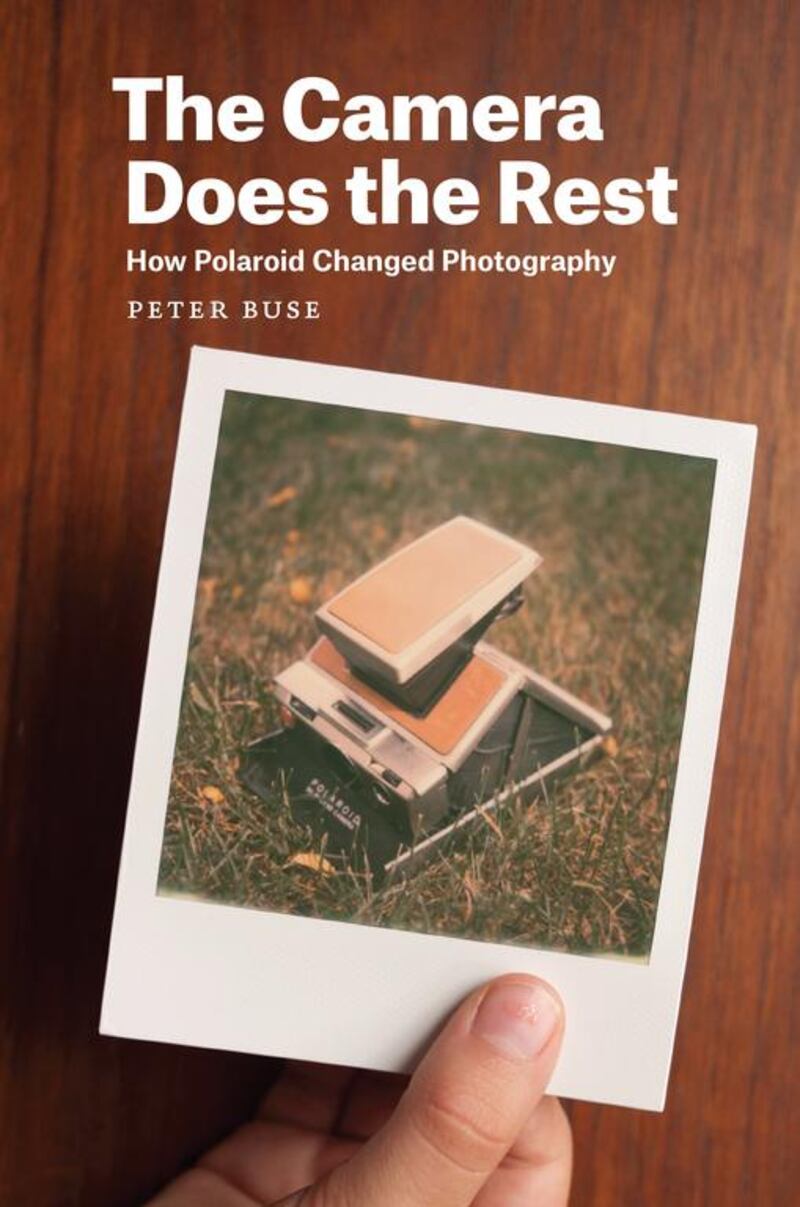Singularity defined Polaroid – as product and as picture. The company in many ways ran against the grain of photographic history, and the images that it produced, lacking negatives, could not readily be reprinted. Peter Buse explains the company's peculiar appeal in the second of three excerpts from his book The Camera Does the Rest: How Polaroid Changed Photography.
The excerpt
The Polaroid difference, its strangeness even, was on display in April 1973 at the company’s annual meeting in a converted warehouse in Needham, Massachusetts. The company’s SX-70 model had been demonstrated at the 1972 meeting, and had its limited commercial debut in Miami the previous November, but this was the first time most shareholders were able to try out the camera themselves. That April, cameras and film were still perilously scarce, with Polaroid factories stretched to capacity, and unable to come close to satisfying demand for the gadget of the moment. Nevertheless, no expense was spared at the ostentatious event, including in the provision of precious film. Perhaps the most extravagant act was to attach to the front of every single shareholders’ report an SX- 70 print of a red rose. There were about four thousand in attendance, but 10 times as many reports printed: 40,000 annual reports, and so 40,000 SX-70 prints of a rose. If you are in possession of one of those rose prints now, it is a collector’s item, a piece of photographic history. In the official Polaroid archive at Harvard University, there are no roses attached to the numerous copies of the annual report in stock.
The rose was ostensibly chosen to show off the film’s handling of tricky reds and delicate detail, as well as the close-focusing capacities of the SX-70 camera. Forty years on, it is not these features of the rose print that give us pause. It is instead the thought that every single one of these 40,000 prints had to be individually produced.
That meant 4,000 packs of film, not counting quality control, and a team of photographers making images on an industrial scale. Today, when at the press of a button a single image can be sent instantaneously to ten or 100 times as many screens, it seems a kind of madness to take 40,000 separate exposures in order to attach one to each and every annual report.
__________
The Camera Does the Rest: How Polaroid Changed Photography
■ Read the first excerpt: Polaroid's showman supreme combined publicity and technology
__________
Unlike the photo sent immediately as code around the globe, of course, each one of those rose prints was a singular image. Even if the prints were made under controlled lighting with an SX-70 camera on a tripod, each one must have been infinitesimally different from the next, taking into account minute variations in chemistry and the inevitable wilting of the rose or roses.
A kind of madness, then, but also a perfect lesson in what an extraordinary device Polaroid had invented – a machine for making unique photo-objects, every print one of a kind, because not easily subject to the normal processes of photographic reproduction. Nor did Polaroid stop with the 40,000 roses. Later that year 26,000 SX- 70 prints were made of a bowl of fruit for a publicity package for dealers; in early 1974, 90,000 prints of bowls of fruit were made for the international launch of the SX-70. This multiplication of fruit and roses was a matter of company pride, a display of confidence in the new product. Still, there is no getting around the paradox of these expensive and time-consuming promotional acts. What is a new technology, after all, if not a device designed to reduce human labour? What is the point of a machine if it is not replacing the toil of human hands, rather than adding to it?
The goal of “one-step” photography was of course to reduce the number of steps in the production of an image, and Edwin Land’s invention achieved this, but there is still a sense in which it cuts across the main historical trajectory of photographic progress. If the first great triumph of the photographic arts was the capture of an image, and the second was the fixing of that image, then the third must have been making it possible to reproduce that image.
This was William Henry Fox Talbot’s great contribution when he invented the positive negative process in 1839, but the provision of a negative was only part of the challenge. To make use of that negative in an efficient way in order to enable the mass reproduction of photographic images was the scientific puzzle that faced succeeding generations of photographic experimenters. In the half century or more following Talbot’s discovery, there were numerous solutions to this problem: photoglyphic engraving, mass printing on albumen paper, photolithography, the Woodburytype, photogravure, and the half-tone process for press photos. It is fashionable nowadays to claim that digital photography has permanently changed the photographic landscape, but in many ways it is simply the latest solution to an age-old problem – how to exploit the potential for a single photographic image to be turned into multiple copies.
Like digital, Polaroid photography allows us to see an image quickly, and removes from the equation the intermediate steps in the darkroom. However, Edwin Land’s invention is in other respects a sharp deviation from the continuous development of photography’s capacity for mass reproduction, a development that took it from photo-engraving to half-tone to Jpeg.
This is because Polaroid is, in effect, if not precisely in practice, a positive-only process. The SX-70 print may contain layers of negative, but those layers are fully integrated with the positive and are in no way usable in any traditional sense for making copies, a limitation it shares with the earliest photographic image, the daguerreotype. Present it though they might as a revolutionary form of photography, with the SX-70 camera and film Polaroid in fact harked back to a kind of photography that had long been obsolete.
Rather than marking a natural stage in the history of photographic progress, then, the SX-70 and its one-step predecessors might be thought of as discontinuities in that history. One word to describe this peculiar backwards turn is anachronism. Another is perversity. The term need not have negative connotations. If we take “perversity” to be any departure from an accepted norm, and agree that by the mid 20th century, and certainly in 1973, the norm was for photography to be negative-based, then Polaroid photography is technologically and photographically perverse.
It is perverse, in 1973, to invent a photography that cannot be copied without great difficulty. It is perverse to take 40,000 separate exposures of a rose or roses when it is infinitely more economical in time and effort to take a single exposure and reproduce the image using modern and convenient processes. It is perverse to make work where no work should be necessary.
Polaroid’s perversity extends further. As photographer Chuck Close has observed, just as cameras and films were getting smaller, Polaroid was making them bigger. The main direction of travel in photographic history, Close points out, has been from plates to sheets to rolls, and then to increasingly smaller canisters, culminating in 35mm film. Precisely because the laboratory for developing Polaroid film had to be contained entirely within the camera, that camera needed to be large enough to accommodate the final print. There was simply no getting around the fact that some part of a Polaroid camera had to be as wide and as tall as the picture that came out of it. This meant either large cameras or small prints, and even when the prints were small, the cameras were still pretty big.
The Swinger, for example, was small and light compared with early models such as the Model 95 or the Pathfinder, but it still dwarfed the Kodak Instamatics of the same era, which could fit neatly in the palm of your hand. Even then, the Swinger’s print, at 2 inches by 3 inches, was smaller than the standard 3 x 3 print made by Kodak from its 126 film for Instamatics.
The main alternative to the Swinger in the 1960s was the Polaroid Automatic series, an elegant bellows camera that folded down into a 5 x 8 x 2 inch rectangular shape, complete with hard plastic casing. Unfurled, it was striking and stylish, but definitely not the sort of thing you could conceal about your person. This was why the SX-70 was such a great advance. Closed, it looked like an oversized whisky flask. Polaroid even claimed that it was pocket-sized, and while it is true that you could slip one into a large pocket of an overcoat, you needed something else on the other side for ballast. It was Land who insisted that it should fit in a pocket, and it took heroic feats of engineering and design to get it to fold as it did, but when he gave a glimpse of a prototype at the annual meeting of 1972, what the audience didn’t know was that he was in a specially tailored suit with oversized and heavily reinforced pockets. When he later scorned Kodak’s integral instant cameras for their “unfortunate bulk”, Polaroid’s own nonfolding versions of SX-70 technology were looking rather bulky themselves.
By the 1990s compact 35mm and disposable cameras were widespread, making the Swinger and Polaroid Automatics of the past look gargantuan both in size and weight.
Reprinted with permission from The Camera Does the Rest: How Polaroid Changed Photography, by Peter Buse, published by the University of Chicago Press. © 2016 by The University of Chicago. All rights reserved.
business@thenational.ae
Follow The National's Business section on Twitter











